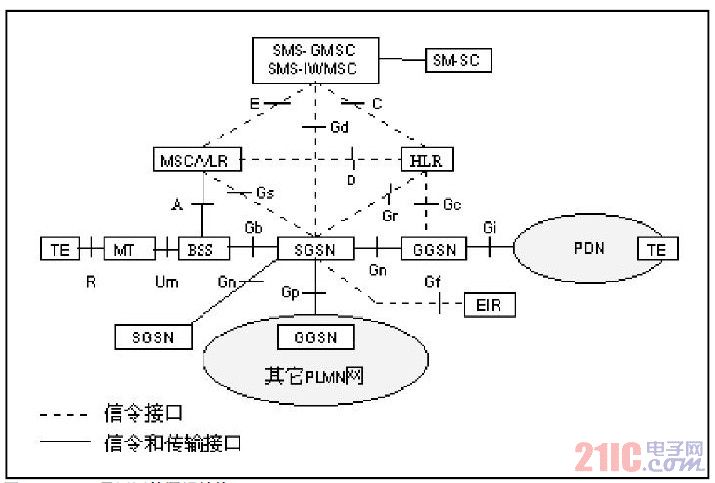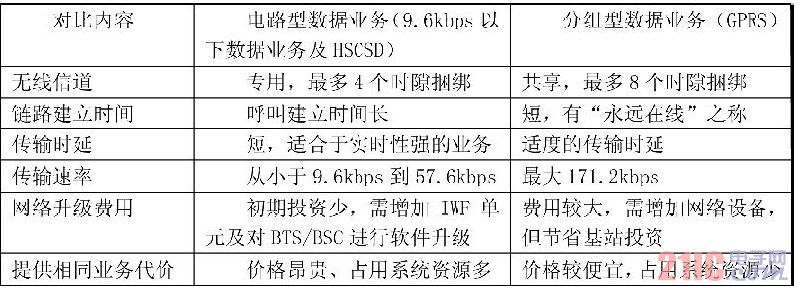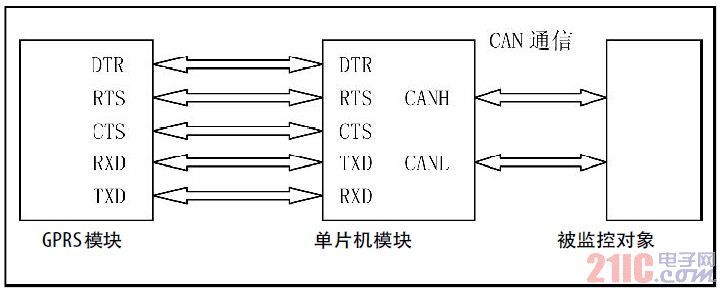introduction This article refers to the address: http:// The English abbreviation is a new packet data bearer service developed on the existing GSM system. The application of GPRS network in short message has the characteristics of no dialing, low price, reliable transmission and wide coverage. It is suitable for applications that need to transmit small traffic data frequently and should not be laid. GPRS remote monitoring system is a data monitoring system composed of single-chip microcomputer, which completes the transmission of remote data in the form of short message through GPRS network, that is, adds GPRS module supporting short message, data communication and other services in the traditional single-chip data acquisition system, and It is assigned a separate SIM card, combined with the microcontroller system to achieve remote wireless transmission of data through the serial communication interface. The monitoring terminal can be a PC or a mobile phone or a mobile terminal. 1 GPRS principle and advantages 1.1 Working principle The GPRS network is based on the GSM network and adds the following functional entities: Serving GPRS Support Node (SGSN), Gateway GPRS Support Node (GGSN), and Point-to-Multipoint Service Center (PTMSC). The system shares the GSM base station, but the base station needs to update the software and adopt the new GPRS mobile station: GPRS should add a new mobility management program; realize the GPRS bone network interconnection through the router; the GSM network system should perform software update and add new MAP signaling and GPRS signaling, etc. The logical structure of the GPRS backbone network is as shown below: Figure 1: Logical structure of the GPRS backbone network 1.2 Advantages The pair of GSM and GPRS service features are shown in the attached table. Compared with the GSM circuit switching data transmission mode, GPRS has the advantages of instant Internet access, always online, fast transmission, metered charging, and free switching. Schedule: Comparison of two business characteristics of GSH and GPRS 2 GPRS terminal system design Based on the analysis of the requirements of the application, this paper designs a terminal system based on GPRS network communication and adopts S12 single chip as the core chip. The software system design is developed under the environment of “code warrior for HCS12â€. The terminal system adopts MC9S12DG128 of Motorola. As a CPU processor, the chip uses SIMCOM's latest SIM300 module as a GPRS communication module for transmitting and receiving data. 2.1 MCU module The one-chip computer adopts Motorola's 16-bit HCS12 series single-chip microcomputer MC9SDG128, which is a mid-range chip based on 16-bit HCS12CPU memory products. On-chip 128KB Flash EE PROM, 8KB RAM, 2KB EE PROM, and on-chip integration of many standard modules, including 2 asynchronous serial communication port SCI, 2 synchronous serial communication port SPI, 8 channel input capture / Output compare timer, two 10-bit 8-channel A/D converter modules (ADC), one 8-channel pulse width modulation module (PW M), one digital byte data link controller (BDL C), 29 Independent digital I/O port ((Port A, Port B, Port K and Port E), 20 of which have external interrupt and wake-up function, 5 CAN modules compatible with CAN2.0A/B protocol, B software compatible module (MSCAN12) And an internal IC bus module; its high performance-price ratio makes it ideal for some high-end automotive electronic control systems. At the same time its simple background development model (BDM) will further reduce development costs, but also Make field development and system upgrades more convenient. The implementation is as follows: (1) The multiplexed serial port 1 is respectively connected with TX D0 and RX D0 of the GPRS module, and 6 ports of the PT port are respectively connected to the remaining communication ports corresponding to the GPRS module, and the initialization of the SIM300 and the control of the GPRS module are completed by software setting. Send and receive data. (2) Extend the external controller (such as data acquisition terminal) through serial port 0, the external controller terminal is connected to the standard serial port, and the controller of the design can be easily communicated according to the agreed protocol. 2.2 GPRS module SIM300 is a GSM/GPRS dual-band module introduced by SIMCOM, which provides wireless interfaces for voice transmission, short message and data services. SIM300 integrates complete RF circuit and GSM baseband processor, suitable for developing some GSM/GPRS wireless applications, such as mobile phone, PDA, PCMCIA wireless MODEM card, USB wireless MODEM, wireless POS, wireless meter reading, wireless Data transmission services, wireless public telephones, wireless business telephones, monitoring, scheduling, vehicle, remote control, remote measurement, positioning and navigation systems and products, a wide range of applications. The SIM300 module provides users with a fully functional system interface. Users only need to invest a small amount of research and development costs, and they can integrate their own application systems in a short development cycle. The user's main work focuses on the control system and human-machine interface. The DG128 controls the GPRS module to receive and transmit information, and communicates data through a standard serial port and an external controller (such as a data acquisition terminal). The software is used to implement the interrupt and complete the data forwarding. 2.3 Communication module hardware and software design The hardware design of the communication module is shown in Figure 2. Figure 2: Module hardware design The GPRS module transmits data through the serial port and the single chip microcomputer. In the system, the GPRS module is equivalent to the serial port of the single-chip system, and the GPRS data is equivalent to the serial port data of the single-chip system. Therefore, the collection of remote data corresponds to the acquisition of the serial port data of the single chip microcomputer. The serial port uses an interrupt call. The serial port interrupt service program completes functions such as data transmission and reception, and can receive various commands sent by the host computer to the system, and can also transmit the result of the alarm device to the upper computer. The sending process of the MCU and GPRS is: before sending the data, the transmitting end should give a request to send the RTS, the receiving end uses this signal to clear the receiving buffer, and the transmitting end receives the allowed transmitting signal CTS of the receiving end. Then, the receiving end sends out the data terminal ready signal DTR, and after receiving the DTR of the other party, the DTR of the transmitting end starts to send data on TX D. CAN communication transmission and acceptance process is shown in Figure 3. Figure 3: Send and receive process 3 Conclusion With the development of communication technology, the original remote monitoring system has been unable to meet various requirements, and we need a lower cost communication method. The GPRS remote monitoring system utilizes the existing GPRS network resources to take advantage of high network coverage and good transmission characteristics to provide a convenient wireless data transmission method for existing data acquisition systems, which will become industrial control and on-site monitoring. The development trend of the field, and can be widely used in transportation, security alarm, power monitoring, oil, mining and other industries. Based on the above considerations, the GPRS module is embedded in the system, and the most advantageous short message function is used to send the collected data to the base station by means of short message, and the base station also realizes timely monitoring and management of the terminal by means of short message. MCCB with Earth Leakage Protection(ELCB) TRE Series
Independent power supply with build-in power source,directly draws power from the incoming end to avoid the risk of protection function failure caused by external power supply failure.
Earth-leakage protection is a residual current protection based on current measured by a rectangular sensor encompassing the three phases of the three phases and neutral.
mccb with earth leakage protection,circuit leakage protection,Earth Leakage Breaker,3phase Elcb,Elcb 200a ZHEJIANG QIANNA ELECTRIC CO.,LTD , https://www.traner-elec.com



TREF, MCCBs with earth leakage protection
â— Overload protection
â— Short circuit protection
â— Isolation
â— Earth-Leakage Protection
â— Used in residential building, non-residential building, industry, energy and infrastructure